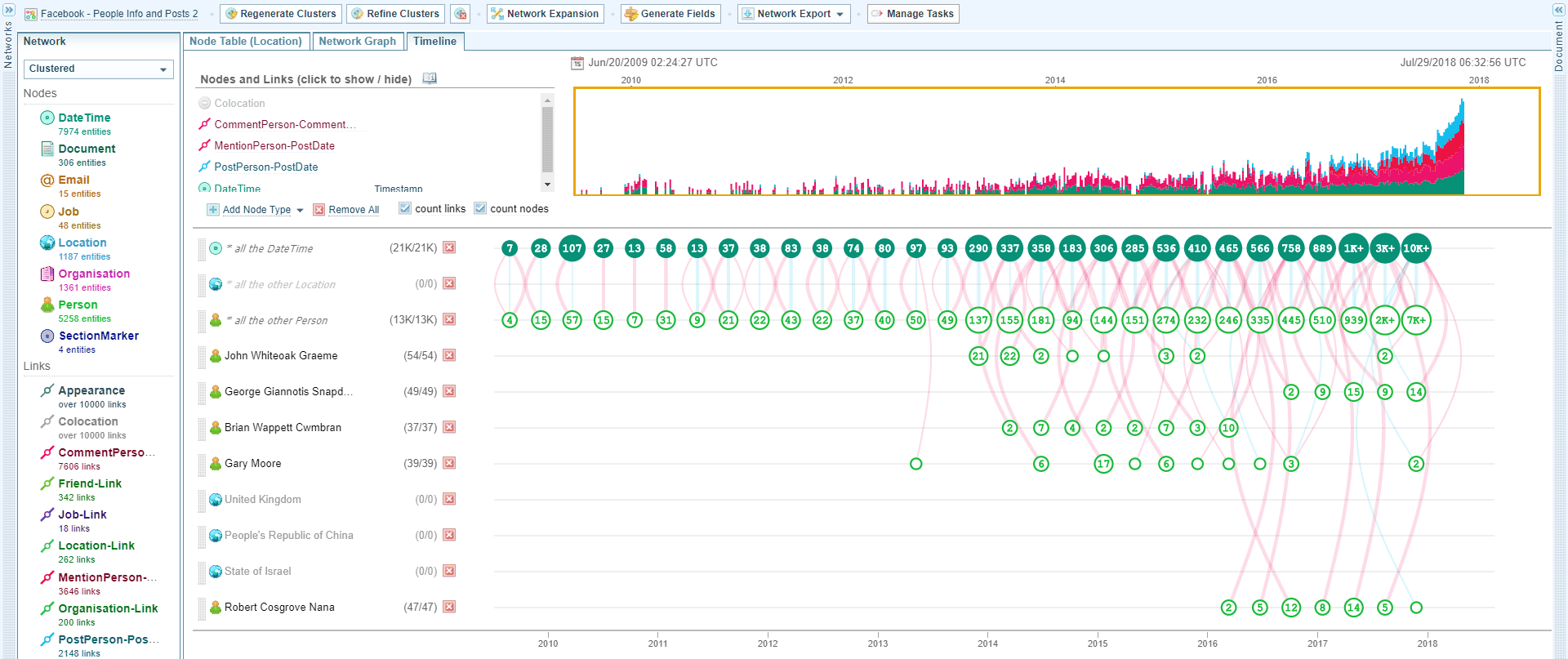Getting unstructured text ‘write’
Do you remember the movie Se7en? Morgan Freeman and Brad Pitt in their roles as detectives Somerset and Mills tracked down serial killer John Doe (Kevin Spacey) to his apartment using library records. When they arrived they discovered hundreds of handwritten notebooks which detailed the killer’s state of mind and contained clues to another murder. It was impossible for the detectives to read through and sift the evidence contained in the notebooks in time to prevent murder number four. Of course, Se7en is a movie, but in real life criminal cases, time is also of the essence and handwritten information potentially a source of vital information.

Even in our increasingly digital age handwritten information still exists and could be used as part of a criminal investigation. Handwritten information could be useful in cases of fraud, embezzlement, and counterfeiting but it could feature in any criminal investigation from murder, terrorism or assaults to abduction, drugs cases, and missing persons.
Many people keep a handwritten daily journal, diary or appointment book. The art of letter writing is not yet dead and most of us put pen to paper to create notes and to-do lists on a daily basis. When gathering intelligence, criminal analysts cannot afford to ignore handwritten information, nor can they afford the amount of time that it takes to read and process that intelligence.
Analyzing Police Notebooks: A Rich Source Of Intelligence

Possibly the most important sources of handwritten information are Police notebooks, field notes or pocketbooks. They contain first-hand accounts of events, written by officers at the time that they occur. They may contain:
- Written records of events with precise dates and times,
- Unsolicited comments made by a suspect outside the context of a formal interview, which may be relevant to an offense
- Any additional information that an officer regards as relevant to any aspect of their police work.
If an officer is in any doubt about whether or not to record a piece of information then they are encouraged to err on the side of caution and to record everything effectively and completely.
Police notebooks and pocketbooks are official documents and their importance shouldn’t be underestimated. They are admissible in court and officers are permitted to use them to refresh their memories when giving evidence. Under normal circumstances, Analysts access the contents of these documents second hand, receiving reports that officers have produced based on their written notes. But what happens if information which is contained in a notebook is not transcribed into a report? What if it only becomes clear later on in a criminal investigation that a certain piece of information is relevant and important? What if a Criminal Intelligence Analyst could process information from the original, handwritten, unfiltered source documents created at the time of the event?
Processing handwritten information with OCR
Thankfully there is a quick, seamless and accurate way of processing handwritten information. Handwritten documents can be digitized using OCR (optical character recognition) which translates written information into text files. Once these unstructured text files have been created Analysts can process them with the help of investigative software which will identify the people, vehicles, places, and events contained within them. Not only that, but Analysts can make connections between these entities and create visual representations of networks including links between entities using a range of intelligence software packages. They can also create timeline views, maps, tables and charts which shed light on the precise sequence of events in a criminal investigation to help pinpoint what happened, when and where.
Discover Sintelix: The unstructured text intelligence solution
Sintelix exists for just that purpose, to enable Analysts to swiftly process large amounts of unstructured data in such a way that they can make sense of the information contained within. This allows Analysts to identify patterns and links which may have previously been hidden. The intelligence that Analysts produce can be used to solve crimes, find missing people and make the world a better place to live.
Of course, handwritten information is only one small source of intelligence within any investigation and once it has been digitized it is possible to analyze it in conjunction with other sources of data. This could include witness statements, police reports, mobile phone records, emails, financial information, pages from the internet, the list is seemingly endless. This full picture is essential if Law Enforcement Agencies are going to solve criminal cases.
It is also important for Analysts to be able to use the best investigative analysis software for the job and to be able to collaborate across agencies and forces. For that reason, Sintelix integrates with a wide range of complementary software packages, databases and systems including the i2 product range, Microsoft SharePoint and more. Using Sintelix, Analysts can take data from Police notebooks to i2 Analyst’s Notebook seamlessly, creating powerful intelligence with ease.
Contact us for more information on Sintelix. We’d love to talk to you.



